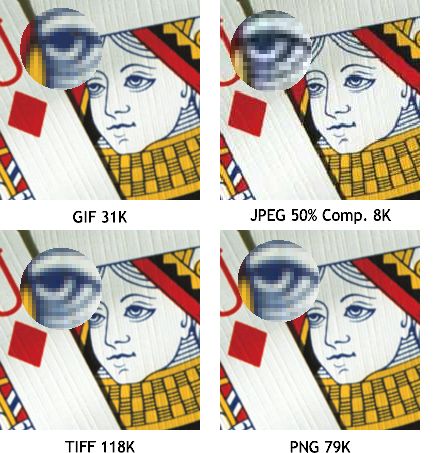|
I'm really curious about this file format .301 Brook Trout. Does anybody know what application creates this? I will award a free copy of the MOOK 2
, a Japanese publication featuring 11 of your editor's stereogram images that just hit the news stands in Japan, to the first person to enlighten your editor. Use the form on Page 7 to send me the deets (details).
As we learned last month, bitmaps are comprised of tiny squares called pixels (an abbreviation for picture elements). Each pixel can be only one
color and that color will be chosen from a palette of colors determined by the color depth of the image. (1 color, 2 colors, 16 colors, 256 colors, 16.7 million colors).
So, if bitmaps are this simple, then why are there so many different file formats? I thought you'd never ask.
Well, different file formats are required for different tasks. Some applications such as Photoshop, have their own proprietary file formats designed to take full
advantage of the features offered by the host application. There are three common file formats we use for Web images, GIF, PNG, and JPEG. These formats were developed specifically for freely
exchanging RGB images between platforms and software applications. These formats are not really designed to be edited, and each time they are, some data may be lost. This is especially true of GIF
and compressed JPEG images. PNG images are a newer file format that allow for a variety of uses.
Two common file formats designed for bitmap editing, and formats that retain most of the image information, are TIFF and PSD
(Photoshop's native file format). Each bitmap creation and editing application has it's own native file format as well, such as Corel Photo-Paint's CPT file format.
TIFF and PSD
file formats are designed to maintain more image information even even though the images may have been resized. So an image that is 600 x 400 pixels can be reduced to 150 x 100 pixels, and then enlarged back to 300 x 200 pixels and, in theory, should retain more of the image information than a compressed file such as
JPEG and GIF.
GIF, and JPEG
files (when compression is used), toss out the non-visible pixels when an image is reduced, and enlarging the image after reduction will generally result in a noticeable degradation of the image.
NOTE:
When you resize an image in Xara, Xara retains the original image information, and thus if you scale an image down to 50% and then scale it back 200% to its original size, the image should look identical to what it looked like before it was scaled.
 The images on the left have been
exported to the file formats shown and then imported into Xara and saved as one JPEG image. Even though the images look pretty similar, when we examine Jack's right eye at 400% magnification we can see some
differences. The images on the left have been
exported to the file formats shown and then imported into Xara and saved as one JPEG image. Even though the images look pretty similar, when we examine Jack's right eye at 400% magnification we can see some
differences.
The JPEG image looks particularly bad and there is some characteristic color bleeding. The other three images look pretty OK. But notice the file
sizes. Because the GIF and JPEG are only concerned with the visible pixels, they are able to offer higher image compression and a much smaller file size.
The four images have been exported as a JPEG image at 80% compression and so do not completely represent the way the actual image would look. The GIF
, for example only contain 256 colors maximum and is a little less smooth.
|

